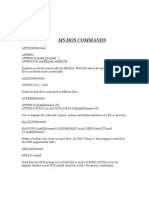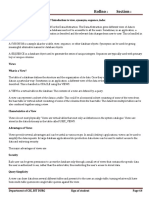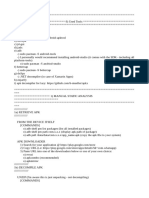0% found this document useful (0 votes)
190 views12 pagesDBMS Interview Questions
The document provides a comprehensive list of DBMS interview questions and answers tailored for Cognizant GenC candidates. It covers fundamental concepts such as DBMS advantages, database relationships, normalization forms, SQL commands, transactions, joins, indexes, views, triggers, stored procedures, deadlocks, and backup/recovery methods. Each topic is illustrated with examples and SQL code snippets to enhance understanding.
Uploaded by
Abhishek KumarCopyright
© © All Rights Reserved
We take content rights seriously. If you suspect this is your content, claim it here.
Available Formats
Download as PDF, TXT or read online on Scribd
0% found this document useful (0 votes)
190 views12 pagesDBMS Interview Questions
The document provides a comprehensive list of DBMS interview questions and answers tailored for Cognizant GenC candidates. It covers fundamental concepts such as DBMS advantages, database relationships, normalization forms, SQL commands, transactions, joins, indexes, views, triggers, stored procedures, deadlocks, and backup/recovery methods. Each topic is illustrated with examples and SQL code snippets to enhance understanding.
Uploaded by
Abhishek KumarCopyright
© © All Rights Reserved
We take content rights seriously. If you suspect this is your content, claim it here.
Available Formats
Download as PDF, TXT or read online on Scribd
/ 12





























































































